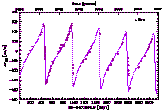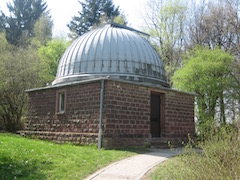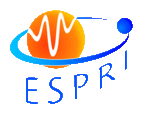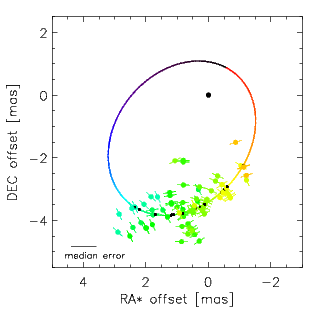Extrasolar Planet Research at the LSW |
Radial Velocities
 From 1999 to 2012 we carried out a precise radial velocity survey of a sample of 373 G and K giant stars,
using the Hamilton High Resolution Spectrograph in conjunction with an iodine cell and the
60cm CAT Telescope at Lick Observatory. The goal was and still is to search for substellar companions
(extrasolar planets and brown dwarfs) in this sample, and to compare the properties
of the identified substellar companions to those found around main-sequence stars in
order to investigate the effect of primary star mass and stellar evolution.
A particular emphasis more recently has been on the dynamical simulation of systems
containing several stellar or planetary companions.
From 1999 to 2012 we carried out a precise radial velocity survey of a sample of 373 G and K giant stars,
using the Hamilton High Resolution Spectrograph in conjunction with an iodine cell and the
60cm CAT Telescope at Lick Observatory. The goal was and still is to search for substellar companions
(extrasolar planets and brown dwarfs) in this sample, and to compare the properties
of the identified substellar companions to those found around main-sequence stars in
order to investigate the effect of primary star mass and stellar evolution.
A particular emphasis more recently has been on the dynamical simulation of systems
containing several stellar or planetary companions.
Waltz Spectrograph
 In 2012, observing at Lick stopped, one of the reasons being that the iodine cell was damaged.
A new cell would introduce a radial velocity offset. We are taking the opportunity to built
a high resolution spectrograph for the 70cm Waltz Telescope on the Königstuhl in
Heidelberg, where we plan to continue observing our Lick giants stars in the future.
The Waltz Spectrograph will also be used for student education, and we are thrilled to
combine science and education by offering our students night time observing experience.
In 2012, observing at Lick stopped, one of the reasons being that the iodine cell was damaged.
A new cell would introduce a radial velocity offset. We are taking the opportunity to built
a high resolution spectrograph for the 70cm Waltz Telescope on the Königstuhl in
Heidelberg, where we plan to continue observing our Lick giants stars in the future.
The Waltz Spectrograph will also be used for student education, and we are thrilled to
combine science and education by offering our students night time observing experience.
Carmenes
 We are also heavily involved in the
CARMENES
project, a german-spanish collaboration which carries out
a precise Doppler survey of about 300 M dwarfs at the 3.5m telescope at Calar Alto (Spain)
since 2016. The goal of the CARMENES survey is to find low-mass planets orbiting
in the habitable zones of their host stars.
The CARMENES instrument consists of two spectrographs which cover the visible and the near infrared
wavelength regimes simultaneously. The visual spectrograph reaches a precision of around 1 m/s.
We are also heavily involved in the
CARMENES
project, a german-spanish collaboration which carries out
a precise Doppler survey of about 300 M dwarfs at the 3.5m telescope at Calar Alto (Spain)
since 2016. The goal of the CARMENES survey is to find low-mass planets orbiting
in the habitable zones of their host stars.
The CARMENES instrument consists of two spectrographs which cover the visible and the near infrared
wavelength regimes simultaneously. The visual spectrograph reaches a precision of around 1 m/s.
Direct Imaging
 The LSW is part of an international consortium which performs a
direct imaging survey
for planets in wide orbits around nearby young stars using the NaCo instrument
at one of ESO's VLT Telescopes in Chile. The survey runs from 2015 to 2019,
with about 120 guaranteed nights in total.
Originally, the plan was to carry out an astrometric survey for planets around nearby
stars with the PRIMA instruments, but those efforts were terminated in 2014.
The LSW is part of an international consortium which performs a
direct imaging survey
for planets in wide orbits around nearby young stars using the NaCo instrument
at one of ESO's VLT Telescopes in Chile. The survey runs from 2015 to 2019,
with about 120 guaranteed nights in total.
Originally, the plan was to carry out an astrometric survey for planets around nearby
stars with the PRIMA instruments, but those efforts were terminated in 2014.
Astrometry

We are looking forward to use Gaia Data for our Exoplanet Research!
In the past, we have used the Intermediate Astrometric Data provided by Hipparcos to place upper limits on the masses of planets and brown dwarfs detected with the Doppler method. We could confirm nine planets and two brown dwarfs. For 20 systems, we could detect the astrometric signature of the companion in the Hipparcos data, yielding constraints on inclination and ascending node (Reffert & Quirrenbach 2011, A&A 527, A140).